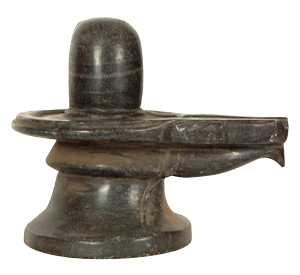 In chapter 14 of Mahanirvana Tantra consecration of Shiva Linga has been elucidated. Goddess Parvathi asks as to what are the rites relating to the installation of a Shiva Linga. The goddess considers that no one is as omniscient, merciful, omnipresent and protector like Lord Shiva.
In chapter 14 of Mahanirvana Tantra consecration of Shiva Linga has been elucidated. Goddess Parvathi asks as to what are the rites relating to the installation of a Shiva Linga. The goddess considers that no one is as omniscient, merciful, omnipresent and protector like Lord Shiva.
The merits of installing a Shiva Linga are numerous. A man is purified of all his sins and he is granted a place in heaven. It is considered that a man acquires several times the merits which are obtained by giving the world everything, by performing ten thousand horse-sacrifices, by digging of a tank in a water scarcity country or by making the poor happy. Lord Brahma, Lord Vishnu, Lord Indra and other Gods decide where Mahadeva is in the form of Linga.
Mostly all places of pilgrimage abide near Lord Shiva. A shiva Kshetra is a land which is within the radius of hundred cubits of Shiva Linga. Land of Isha is very holy. It is the excellent of all holy places as there abide all the immortals and there are all the holy places. He who lives there becomes cleansed of all sins and goes to the heaven of Shangkara post death. Anything done in this land of Shiva has a multiple effect due to the greatness of Lord Shiva.
Sins done in a Shiva Kshetra hold on to man and is strong as a thunderbolt. Performing of pious acts like Purascharana, japa, acts of charity, Shraddha, tarpana are eternal. One can attain the merit of the performance of a hundred Purascharana by merely performing one japa near Shiva. A man would obtain the same fruit by offering ten million pindas at Gaya, the Ganges, and Prayaga as offering a single pinda once only in the land of Shiva.
Even in the case of those who are guilty of many sins or of great sins attain the supreme abode if Shraddha be performed in their names in the land of Shiva. Gretaness of Anadi linga cannot be expressed in words. Whether the Shiva Linga is placed on a Gauri-patta or not the devotee in order to attain his desires should worship it devoutly. The devotee who is excellent earns the merit of ten thousand horse-sacrifices if he performs the Adhivasa of the Deva in the evening prior to the installation of Shiva Linga.
In the Adhivasa rite twenty articles are used: Earth, Scent, Pebble, Paddy, Durva grass, Flower, Fruit, Curds, Ghee, Swastika, Vermillion, Conch-shell, Kajjala, Rochana, White Mustard Seed, Silver, Gold, Copper, Lights, and a Mirror. The Maya Vija and the Brahma-Gayatri should be repeated while taking each of the articles. Thereafter the forehead of the worshipped spirituality should be touched taking al the articles mentioned above. The ceremony of Adhivasa needs to be performed with the Prashasti-patra. After performing Adhivasa the deity is bathed with milk and other liquids.



















